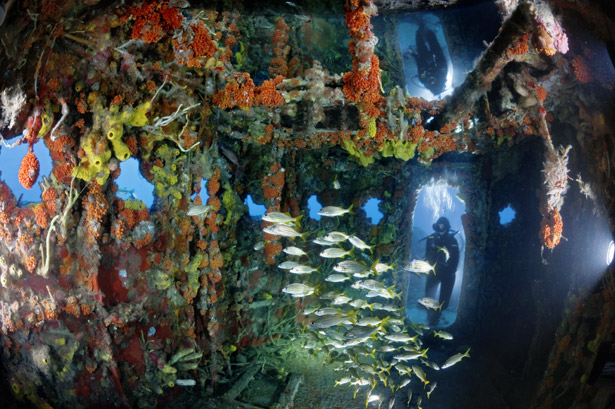ArtificialReefs
Artificial Reefs
What are Artificial Reefs?
An artificial reef is a human-made underwater structure that substitutes as a natural reef to form a habitat for marine life. Artificial reefs are placed in areas where there is little bottom topography or near coral reefs to attract marine populations. These structures are made from a variety of materials including shipwrecks, construction debris, oil rigs, concrete, and any other man-made material.
Why Artificial Reefs?
Artificial reefs serve to protect coral reefs form human-induced damages. In addition, they are used for mitigating coastal erosion, creating surf breaks, and in the past have been built to block ships from entering coastal waters. These structures create plankton-rich feeding spots that attract small animals and the reef soon becomes covered by encrusting coral and sponges. The collection of smaller marine organisms brings in predators and expands to establish a new habitat. The significance of this is that these spots divert reef-dwellers like divers and boaters from endangered coral reefs to the artificial reef.
Fisheries Management
Ecotourism - A Way to Preserve the Coral Reefs and Make Money
Example: Cables, Perth, Western Australia. Artificial Reef --> new marine habitat/surf spot --> attracting tourists --> spending $
References
1. "What Are Artificial Reefs and Where Are They Located in the Mid-Atlantic? | Mid-Atlantic Coastal Environment." EPA. Environmental Protection Agency, 24 Jan. 2013. Web. 26 Feb. 2013.
2. Heller, Greg. "Surfing A to Z." Artificial Reefs Explained. Surfline, n.d. Web. 26 Feb. 2013.
3. Bortone, Stephen A. Artificial Reefs in Fisheries Management. Boca Raton, FL: CRC, 2011. Print.
